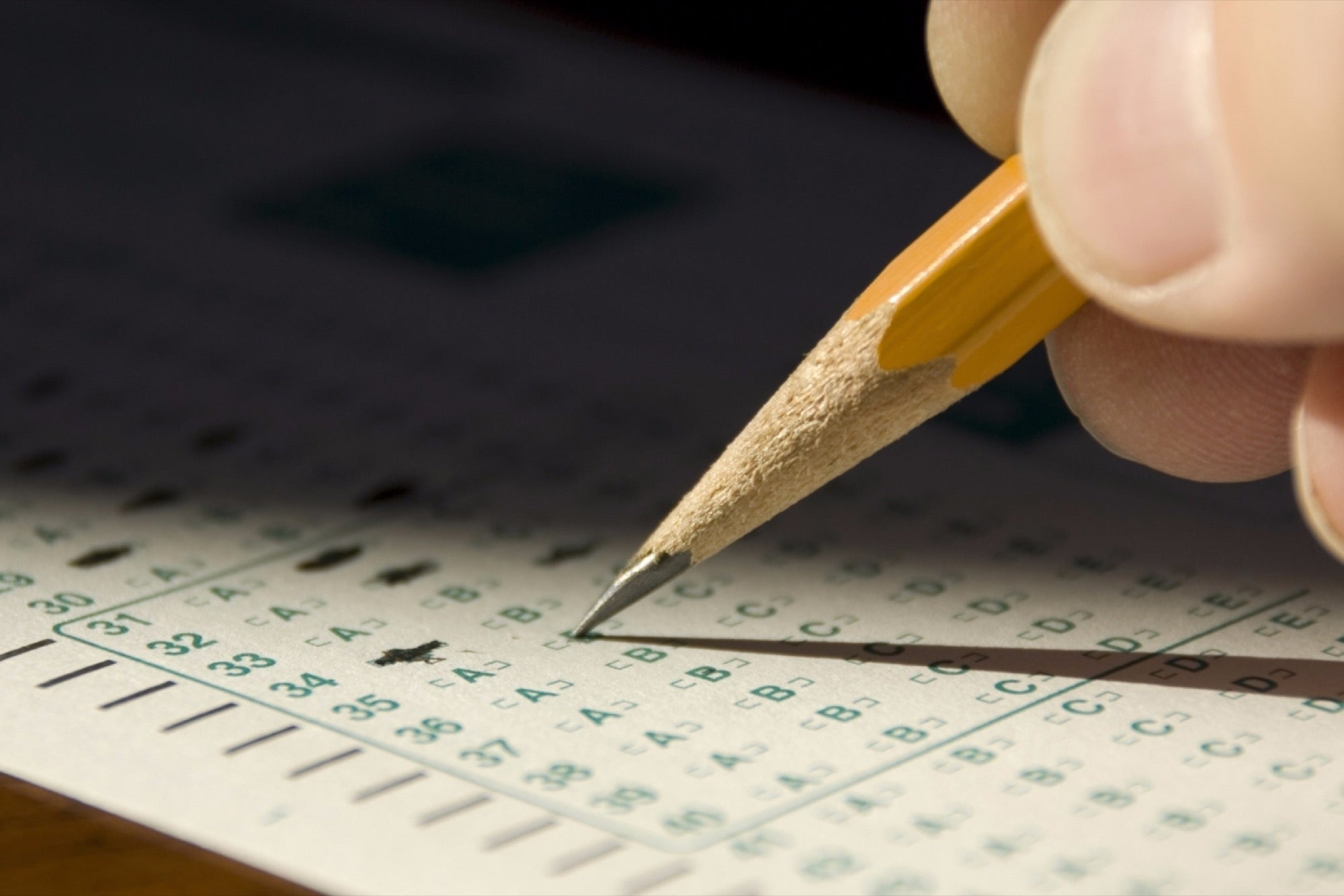SAT Scores Fall to Lowest Level in 10 Years The average score for the test was a 1490 out of a maximum 2400.
By Laura Entis •

Opinions expressed by Entrepreneur contributors are their own.

There's no obvious reason why average SAT scores continue to fall, but continue to fall they do.
Yesterday the College Board reported the average score for the Class of 2015: 1490 out of a maximum 2400. It's the lowest average since the SAT overhauled the test in 2015, and continues a five-year downward trend.
At 3-hours and 45 minutes, the test is divided into a math, reading, and writing section, each with a top score of 800.
Across all three sections, scores slumped slightly from last year's averages. For math, the mean was 511, down from 513 last year. For reading, it was 495 (down from 497) and for writing it was 484 (down from 487).
Unfortunately, this year's decrease isn't a one-off: Overall, SAT scores have been falling slightly but steadily since 2010, when students averaged 515 in math, 500 in reading and 491 in writing.
Related: These 2 Franchisee-Moms Aim to Fill the Gaps in STEM Education
More students from the class of 2015 took the SAT than ever before (1.7 million, up from 1.67 million students graduating last year.) While scores were down, the percentage of students who scored 1550 or higher -- the benchmark that indicates they are ready for college-level work -- remained fairly consistent, at 42 percent.
This percentage varied drastically across racial groups, however. While only 16 and 23 percent of African-Americans and Hispanics, respectively, hit the benchmark, 61 percent of Asians and 53 percent of white test-takers did so. In general, students' scores have been shown to consistently rise with family income.
The SAT, which was updated in 2005, is on the brink of another major overhaul. In March, the writing section will be made optional and the math and reading sections will be updated in an attempt to test students on what they learn in school. Practically, this means fewer questions based on logic puzzles, and more questions based on classroom curriculum. Math and vocabulary sections will be updated to test students on problems and words that they may realistically encounter at college or in the workplace.
Related: LinkedIn Inks $1.5 Billion Deal for Online Education Company Lynda











